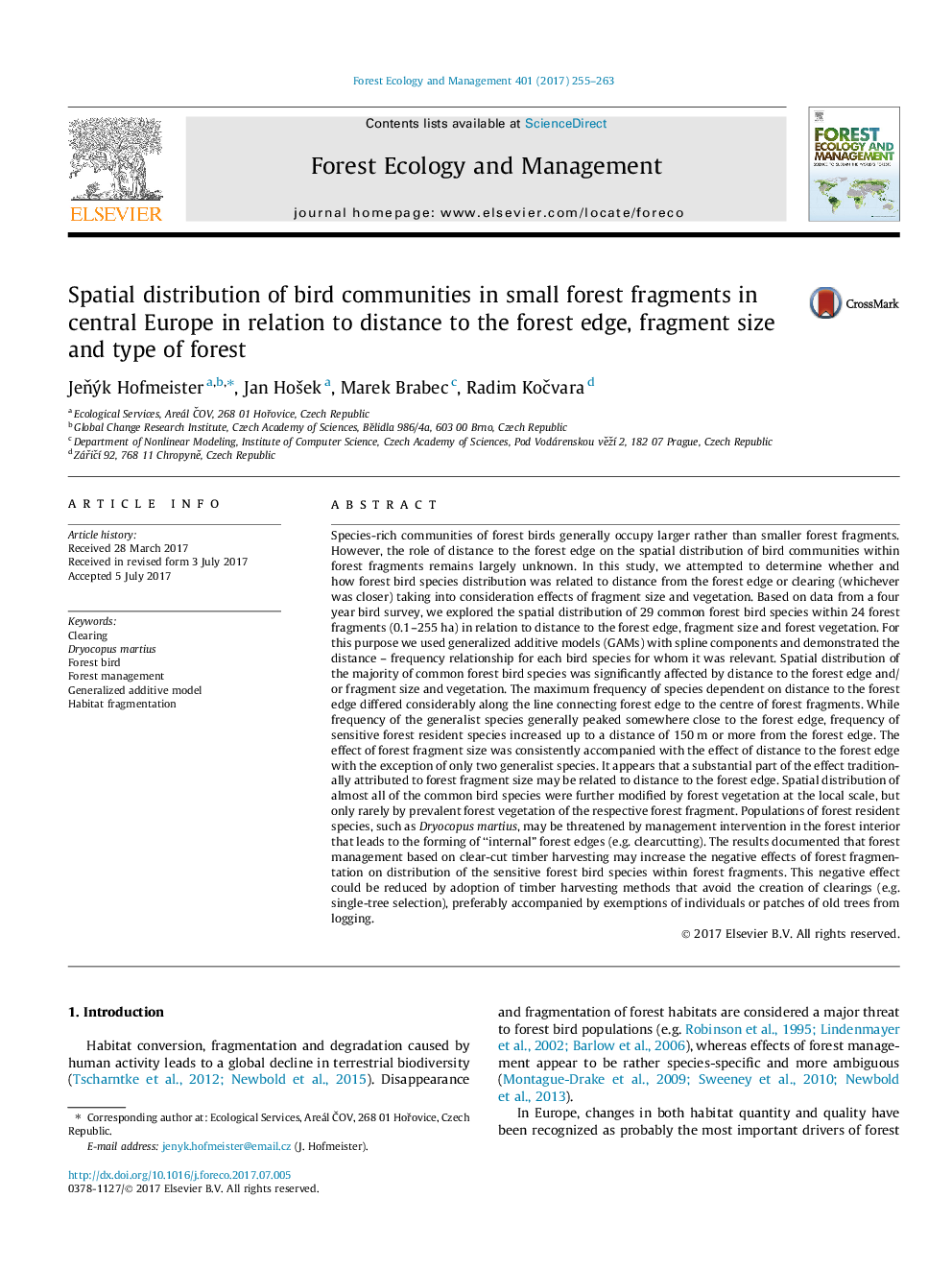| کد مقاله | کد نشریه | سال انتشار | مقاله انگلیسی | نسخه تمام متن |
|---|---|---|---|---|
| 4759319 | 1421357 | 2017 | 9 صفحه PDF | دانلود رایگان |
عنوان انگلیسی مقاله ISI
Spatial distribution of bird communities in small forest fragments in central Europe in relation to distance to the forest edge, fragment size and type of forest
ترجمه فارسی عنوان
توزیع فضایی جوامع پرنده در بخش های کوچک جنگلی در اروپای مرکزی در ارتباط با فاصله تا لبه جنگل، اندازه قطعه و نوع جنگل
دانلود مقاله + سفارش ترجمه
دانلود مقاله ISI انگلیسی
رایگان برای ایرانیان
کلمات کلیدی
موضوعات مرتبط
علوم زیستی و بیوفناوری
علوم کشاورزی و بیولوژیک
بوم شناسی، تکامل، رفتار و سامانه شناسی
چکیده انگلیسی
Species-rich communities of forest birds generally occupy larger rather than smaller forest fragments. However, the role of distance to the forest edge on the spatial distribution of bird communities within forest fragments remains largely unknown. In this study, we attempted to determine whether and how forest bird species distribution was related to distance from the forest edge or clearing (whichever was closer) taking into consideration effects of fragment size and vegetation. Based on data from a four year bird survey, we explored the spatial distribution of 29 common forest bird species within 24 forest fragments (0.1-255Â ha) in relation to distance to the forest edge, fragment size and forest vegetation. For this purpose we used generalized additive models (GAMs) with spline components and demonstrated the distance - frequency relationship for each bird species for whom it was relevant. Spatial distribution of the majority of common forest bird species was significantly affected by distance to the forest edge and/or fragment size and vegetation. The maximum frequency of species dependent on distance to the forest edge differed considerably along the line connecting forest edge to the centre of forest fragments. While frequency of the generalist species generally peaked somewhere close to the forest edge, frequency of sensitive forest resident species increased up to a distance of 150Â m or more from the forest edge. The effect of forest fragment size was consistently accompanied with the effect of distance to the forest edge with the exception of only two generalist species. It appears that a substantial part of the effect traditionally attributed to forest fragment size may be related to distance to the forest edge. Spatial distribution of almost all of the common bird species were further modified by forest vegetation at the local scale, but only rarely by prevalent forest vegetation of the respective forest fragment. Populations of forest resident species, such as Dryocopus martius, may be threatened by management intervention in the forest interior that leads to the forming of “internal” forest edges (e.g. clearcutting). The results documented that forest management based on clear-cut timber harvesting may increase the negative effects of forest fragmentation on distribution of the sensitive forest bird species within forest fragments. This negative effect could be reduced by adoption of timber harvesting methods that avoid the creation of clearings (e.g. single-tree selection), preferably accompanied by exemptions of individuals or patches of old trees from logging.
ناشر
Database: Elsevier - ScienceDirect (ساینس دایرکت)
Journal: Forest Ecology and Management - Volume 401, 1 October 2017, Pages 255-263
Journal: Forest Ecology and Management - Volume 401, 1 October 2017, Pages 255-263
نویسندگان
JeÅýk Hofmeister, Jan HoÅ¡ek, Marek Brabec, Radim KoÄvara,
